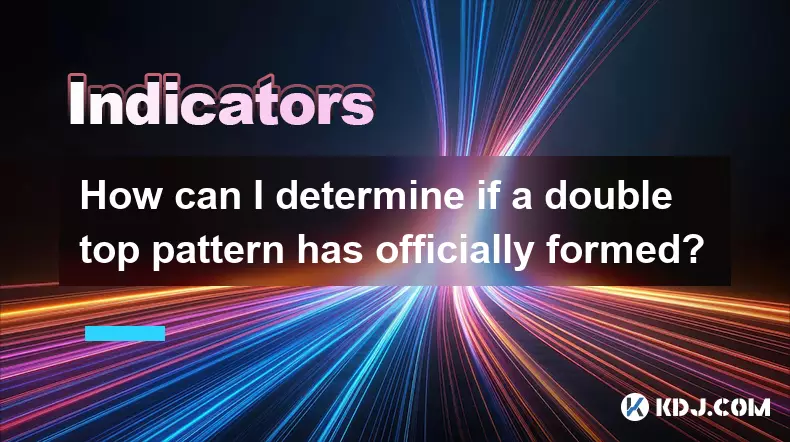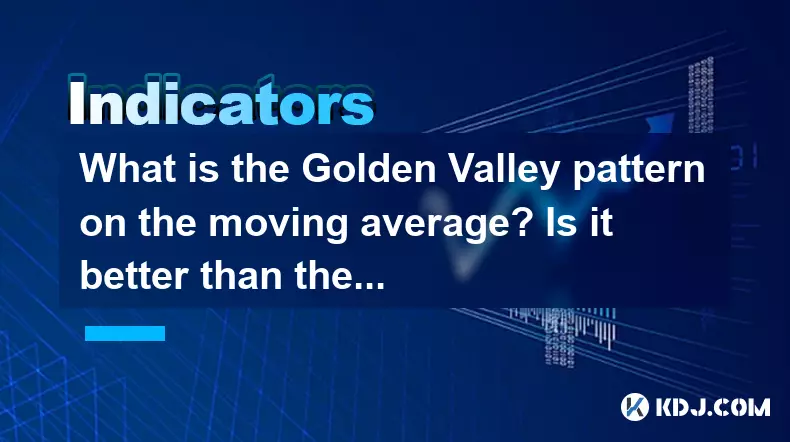-
 bitcoin
bitcoin $122659.385674 USD
0.52% -
 ethereum
ethereum $4484.113342 USD
-0.09% -
 bnb
bnb $1304.229256 USD
-0.85% -
 tether
tether $1.000204 USD
-0.03% -
 xrp
xrp $2.860636 USD
-0.51% -
 solana
solana $227.288799 USD
2.36% -
 usd-coin
usd-coin $0.999805 USD
0.01% -
 dogecoin
dogecoin $0.252837 USD
1.18% -
 tron
tron $0.341149 USD
1.12% -
 cardano
cardano $0.830507 USD
0.33% -
 hyperliquid
hyperliquid $45.792319 USD
0.04% -
 chainlink
chainlink $22.422164 USD
1.55% -
 ethena-usde
ethena-usde $1.000283 USD
0.01% -
 sui
sui $3.511389 USD
0.83% -
 stellar
stellar $0.385276 USD
-0.44%
How to set EMA long-term parameters? Which is more accurate, the 50-day or the 200-day?
EMA is crucial for crypto traders; setting the right long-term parameters like 50-day and 200-day can enhance strategy effectiveness and trend analysis.
May 21, 2025 at 01:07 pm

The Exponential Moving Average (EMA) is a popular technical indicator used by traders and investors in the cryptocurrency market to identify trends and potential entry or exit points. Setting the right long-term parameters for the EMA can significantly affect your trading strategy's effectiveness. In this article, we will explore how to set EMA long-term parameters and delve into the accuracy of the 50-day versus the 200-day EMA.
Understanding the Exponential Moving Average (EMA)
The Exponential Moving Average (EMA) is a type of moving average that places a greater weight and significance on the most recent data points. This makes it more responsive to new information compared to the Simple Moving Average (SMA). The formula for calculating the EMA is as follows:
[ \text{EMA}{\text{today}} = (\text{Price}{\text{today}} \times \text{Multiplier}) + (\text{EMA}_{\text{yesterday}} \times (1 - \text{Multiplier})) ]
Where the Multiplier is calculated as:
[ \text{Multiplier} = \frac{2}{\text{Time period} + 1} ]
Setting Long-Term EMA Parameters
When setting long-term EMA parameters, it's crucial to consider the timeframe of your trading strategy. Long-term parameters are typically used by investors who hold positions for extended periods, often weeks, months, or even years.
Choosing the Right Timeframe: The choice of timeframe depends on your investment horizon. For long-term investors, common timeframes include the 50-day EMA, 100-day EMA, and 200-day EMA. Each of these timeframes offers different insights into the market trends.
Adjusting Sensitivity: The sensitivity of the EMA can be adjusted by changing the time period. A shorter time period, such as the 50-day EMA, will be more sensitive to recent price changes, whereas a longer time period, like the 200-day EMA, will be less sensitive and provide a smoother trend line.
Combining Multiple EMAs: Many traders use multiple EMAs to gain a more comprehensive view of the market. For instance, using both the 50-day and 200-day EMAs can help identify crossovers, which can signal potential trend changes.
The 50-Day EMA
The 50-day EMA is a popular choice among traders and investors looking for a balance between responsiveness and long-term trend analysis. Here are some key points about the 50-day EMA:
Responsiveness: The 50-day EMA reacts more quickly to price changes than longer-term EMAs. This makes it useful for identifying short-term trends within a longer-term context.
Usage in Trading: Traders often use the 50-day EMA to gauge the short-term momentum of a cryptocurrency. A price above the 50-day EMA is generally considered bullish, while a price below it is seen as bearish.
Crossovers: The 50-day EMA can be used in conjunction with other EMAs, such as the 200-day EMA, to identify potential trend reversals. A crossover where the 50-day EMA moves above the 200-day EMA is known as a 'golden cross' and is considered a bullish signal. Conversely, a 'death cross' occurs when the 50-day EMA moves below the 200-day EMA, signaling a bearish trend.
The 200-Day EMA
The 200-day EMA is widely regarded as a key indicator for long-term trend analysis. Here are some important aspects of the 200-day EMA:
Long-Term Trends: The 200-day EMA is less sensitive to short-term price fluctuations and provides a clearer picture of the long-term trend. It is particularly useful for investors who hold positions for extended periods.
Market Sentiment: A price above the 200-day EMA is often seen as a sign of a strong bullish market, while a price below it can indicate bearish sentiment. Many institutional investors use the 200-day EMA as a benchmark for their investment decisions.
Crossovers: Similar to the 50-day EMA, the 200-day EMA can be used to identify significant trend changes. Crossovers involving the 200-day EMA are considered strong signals due to the long-term nature of the indicator.
Comparing the Accuracy of the 50-Day and 200-Day EMAs
When it comes to accuracy, both the 50-day and 200-day EMAs have their strengths and weaknesses, and the choice between them often depends on the specific trading strategy and market conditions.
50-Day EMA Accuracy: The 50-day EMA is more accurate for identifying short-term trends and potential entry or exit points. It is particularly useful for traders who engage in swing trading or short-term investments. However, its higher sensitivity can lead to false signals during volatile market conditions.
200-Day EMA Accuracy: The 200-day EMA is more accurate for long-term trend analysis and is preferred by investors who hold positions for extended periods. Its lower sensitivity reduces the likelihood of false signals, but it may lag behind significant price changes, potentially causing delays in decision-making.
Combining Both EMAs: Many traders find that combining the 50-day and 200-day EMAs provides the most accurate picture of the market. This approach allows traders to benefit from the responsiveness of the 50-day EMA and the long-term trend analysis of the 200-day EMA.
Practical Application of EMA Long-Term Parameters
To effectively apply long-term EMA parameters in your trading strategy, follow these steps:
Select Your Platform: Choose a trading platform that supports technical analysis tools, such as TradingView, Binance, or Coinbase Pro.
Add EMAs to Your Chart:
- Open your trading platform and navigate to the chart of the cryptocurrency you are interested in.
- Click on the 'Indicators' or 'Studies' menu and search for 'EMA' or 'Exponential Moving Average.'
- Add the 50-day EMA by setting the period to 50.
- Add the 200-day EMA by setting the period to 200.
Analyze the Chart:
- Observe the position of the price relative to the 50-day and 200-day EMAs.
- Look for crossovers between the 50-day and 200-day EMAs to identify potential trend changes.
- Monitor the slope of the EMAs to gauge the strength of the current trend.
Make Informed Decisions:
- Use the 50-day EMA to identify short-term trading opportunities.
- Use the 200-day EMA to assess the long-term trend and make investment decisions.
- Combine insights from both EMAs to develop a comprehensive trading strategy.
Frequently Asked Questions
Q1: Can I use other time periods for the EMA besides 50 and 200 days?Yes, you can use various time periods for the EMA depending on your trading strategy. Common alternatives include the 10-day, 20-day, and 100-day EMAs. The choice of time period should align with your investment horizon and trading goals.
Q2: How often should I update the EMA values on my chart?The EMA values on your chart will automatically update with each new price data point. However, it's a good practice to review your charts regularly, such as daily or weekly, to stay informed about the latest market trends and potential trading opportunities.
Q3: Can I use the EMA in conjunction with other technical indicators?Absolutely, many traders use the EMA in combination with other technical indicators, such as the Relative Strength Index (RSI), Moving Average Convergence Divergence (MACD), and Bollinger Bands, to enhance their trading strategies. Combining multiple indicators can provide a more robust analysis of market conditions.
Q4: Is the EMA suitable for all types of cryptocurrencies?The EMA can be applied to any cryptocurrency that has sufficient price data. However, its effectiveness may vary depending on the liquidity and volatility of the specific cryptocurrency. For less liquid or highly volatile assets, it's essential to consider the potential for false signals and adjust your strategy accordingly.
Disclaimer:info@kdj.com
The information provided is not trading advice. kdj.com does not assume any responsibility for any investments made based on the information provided in this article. Cryptocurrencies are highly volatile and it is highly recommended that you invest with caution after thorough research!
If you believe that the content used on this website infringes your copyright, please contact us immediately (info@kdj.com) and we will delete it promptly.
- Charlie Lee, Litecoin, and Regret: A NY Perspective
- 2025-10-10 00:45:15
- Cryptocurrencies, Bitcoin, & Market Analysis: Navigating the New Financial Landscape
- 2025-10-10 00:45:15
- Algorand, Chainlink, and BlockDAG: Navigating the Crypto Landscape in 2025
- 2025-10-10 00:50:12
- Polymarket's POLY Token: Hype or the Next Big Thing?
- 2025-10-10 00:50:12
- Whitelist, Crypto, Utility: Decoding the Hottest Trends in Web3
- 2025-10-10 00:25:15
- Aster Price, Binance Fund, and Ecosystem Growth: What's the Buzz?
- 2025-10-10 00:25:15
Related knowledge

What is a tower bottom candlestick pattern? Does it have a high success rate?
Sep 22,2025 at 07:18am
Tower Bottom Candlestick Pattern Explained1. The tower bottom candlestick pattern is a reversal formation that typically appears at the end of a downt...

What is a black hole pattern in the MACD indicator? Is it a cause for concern?
Sep 21,2025 at 06:54pm
Bitcoin's Role in Decentralized Finance1. Bitcoin remains the cornerstone of decentralized finance, serving as a benchmark for value and security acro...

How can I use the psychological line (PSY) to determine market sentiment?
Sep 17,2025 at 02:19pm
Understanding the Psychological Line (PSY) in Cryptocurrency TradingThe Psychological Line, commonly referred to as PSY, is a momentum oscillator used...

How can I determine if a double top pattern has officially formed?
Sep 21,2025 at 03:18am
Understanding the Structure of a Double Top Pattern1. A double top pattern consists of two distinct peaks that reach approximately the same price leve...

What is the Golden Valley pattern on the moving average? Is it better than the Silver Valley pattern?
Sep 21,2025 at 02:54pm
Understanding the Golden Valley Pattern in Moving Averages1. The Golden Valley pattern is a technical formation observed in cryptocurrency price chart...

What does a death cross of the RSI in the strong zone (above 50) mean?
Sep 17,2025 at 10:54pm
Understanding the Death Cross in RSI Context1. The term 'death cross' is traditionally associated with moving averages, where a short-term average cro...

What is a tower bottom candlestick pattern? Does it have a high success rate?
Sep 22,2025 at 07:18am
Tower Bottom Candlestick Pattern Explained1. The tower bottom candlestick pattern is a reversal formation that typically appears at the end of a downt...

What is a black hole pattern in the MACD indicator? Is it a cause for concern?
Sep 21,2025 at 06:54pm
Bitcoin's Role in Decentralized Finance1. Bitcoin remains the cornerstone of decentralized finance, serving as a benchmark for value and security acro...

How can I use the psychological line (PSY) to determine market sentiment?
Sep 17,2025 at 02:19pm
Understanding the Psychological Line (PSY) in Cryptocurrency TradingThe Psychological Line, commonly referred to as PSY, is a momentum oscillator used...

How can I determine if a double top pattern has officially formed?
Sep 21,2025 at 03:18am
Understanding the Structure of a Double Top Pattern1. A double top pattern consists of two distinct peaks that reach approximately the same price leve...

What is the Golden Valley pattern on the moving average? Is it better than the Silver Valley pattern?
Sep 21,2025 at 02:54pm
Understanding the Golden Valley Pattern in Moving Averages1. The Golden Valley pattern is a technical formation observed in cryptocurrency price chart...

What does a death cross of the RSI in the strong zone (above 50) mean?
Sep 17,2025 at 10:54pm
Understanding the Death Cross in RSI Context1. The term 'death cross' is traditionally associated with moving averages, where a short-term average cro...
See all articles


























![🚨IS VECHAIN (VET) A DEAD COIN ?? PRICE ANALYSIS [GET READY NOW] 🚨IS VECHAIN (VET) A DEAD COIN ?? PRICE ANALYSIS [GET READY NOW]](/uploads/2025/10/09/cryptocurrencies-news/videos/vechain-vet-dead-coin-price-analysis-ready/68e7b200b067b_image_500_375.webp)















































